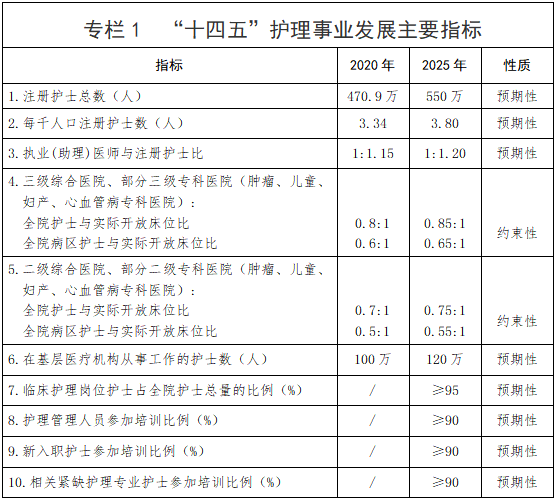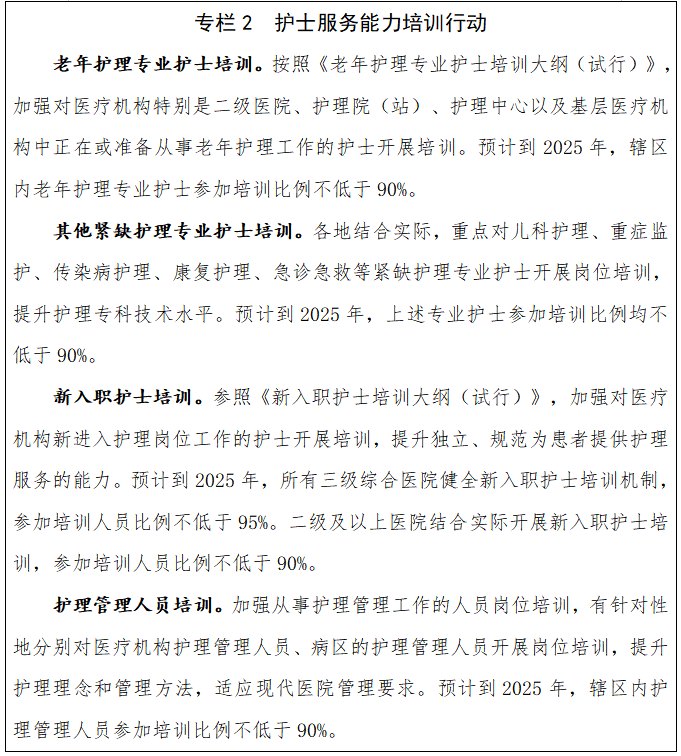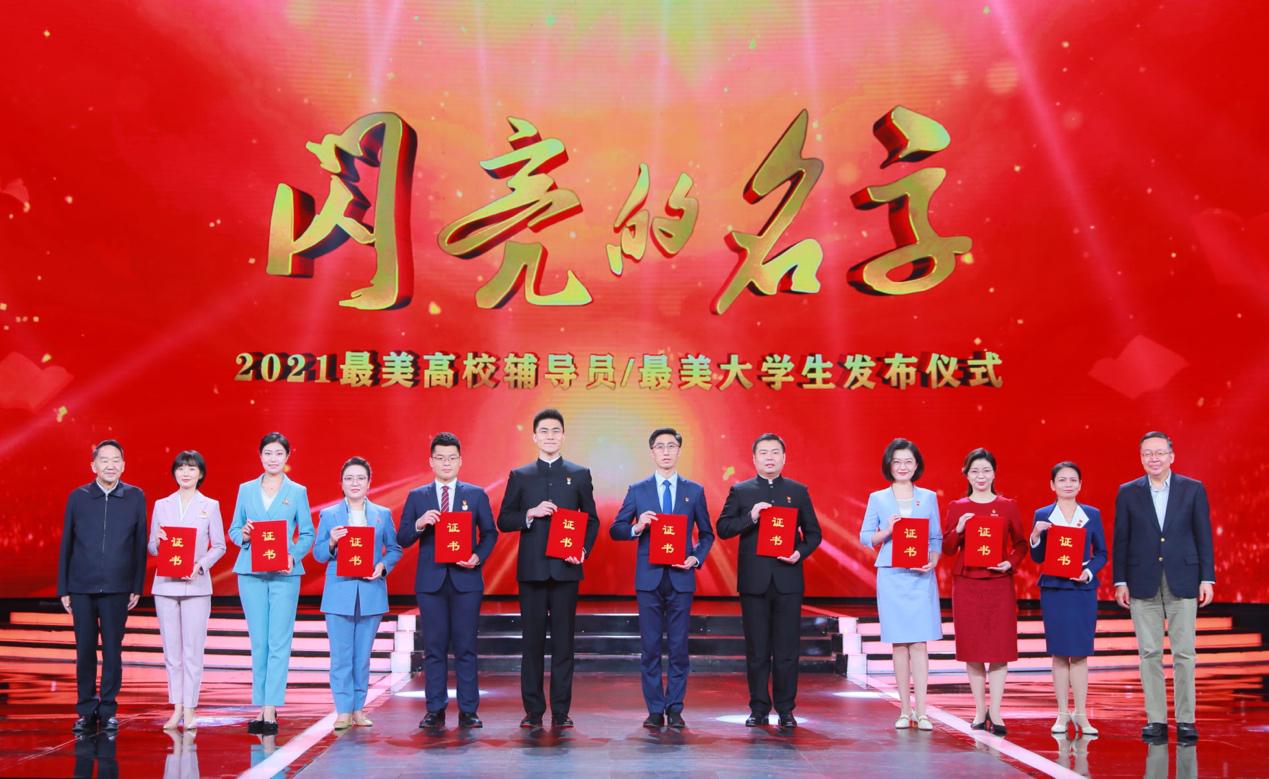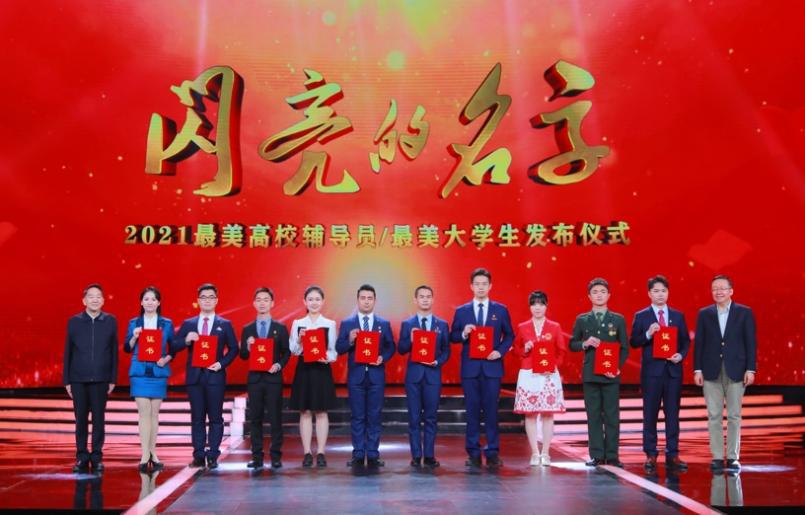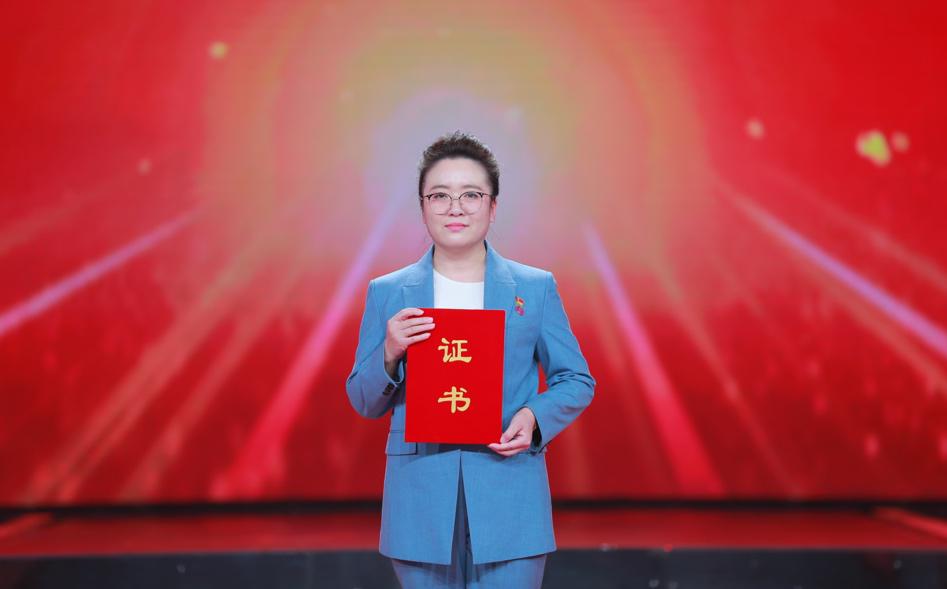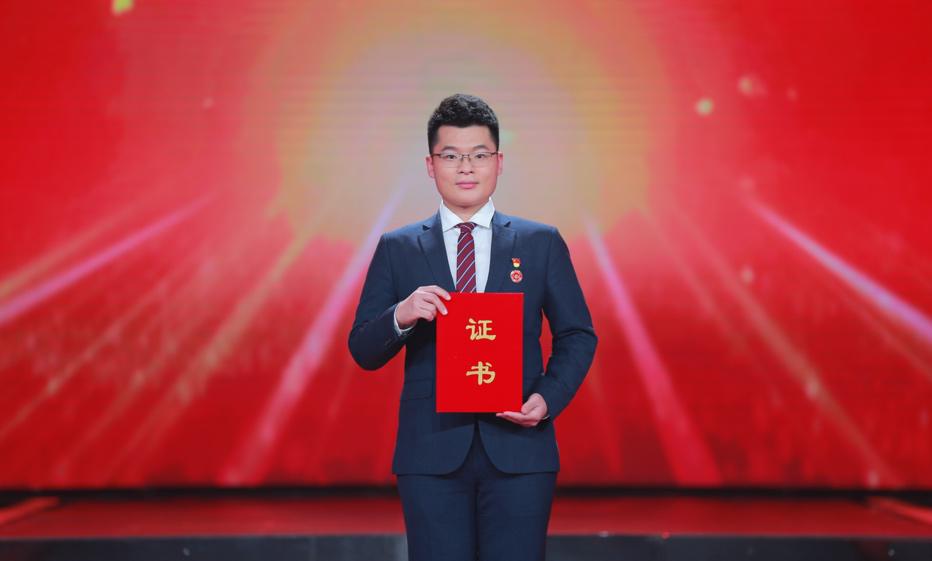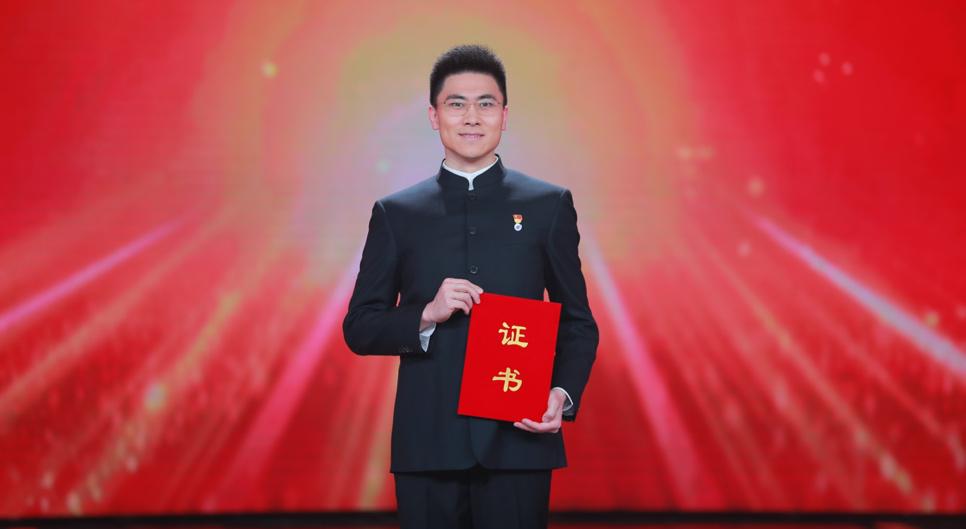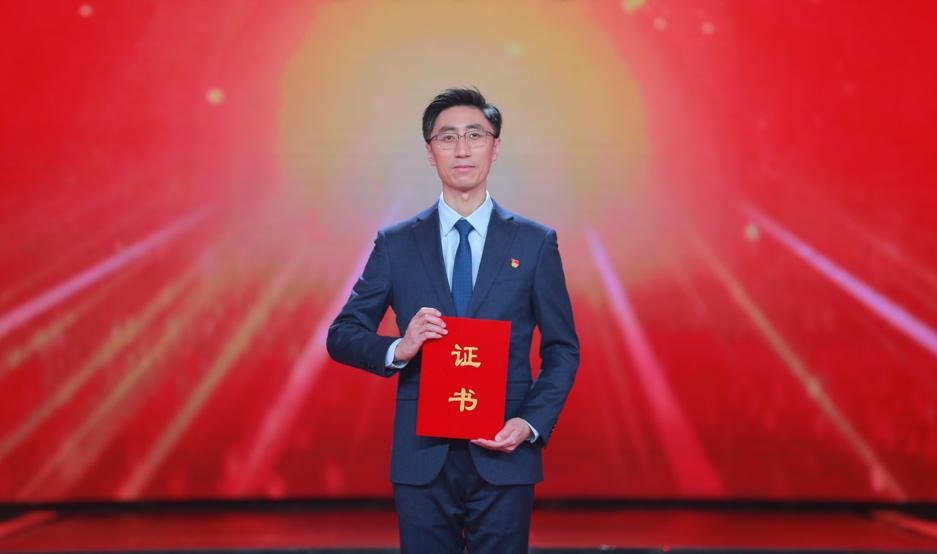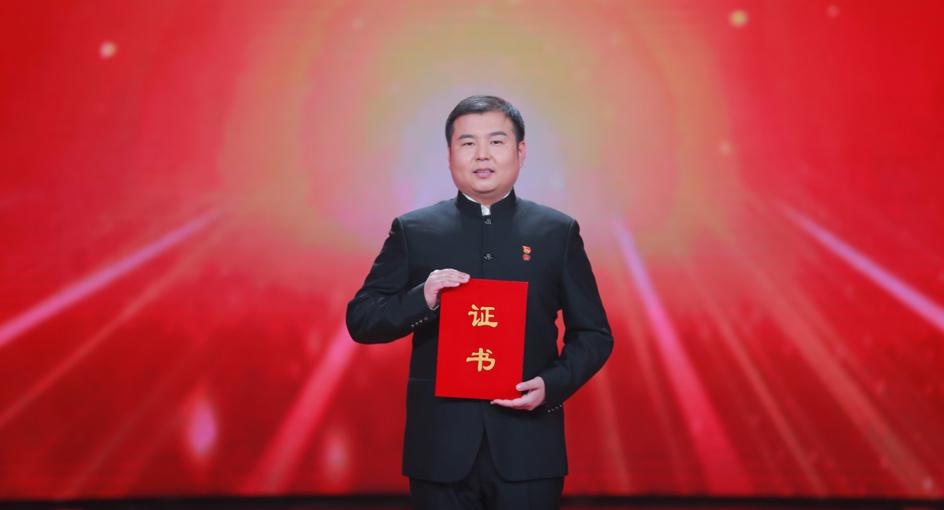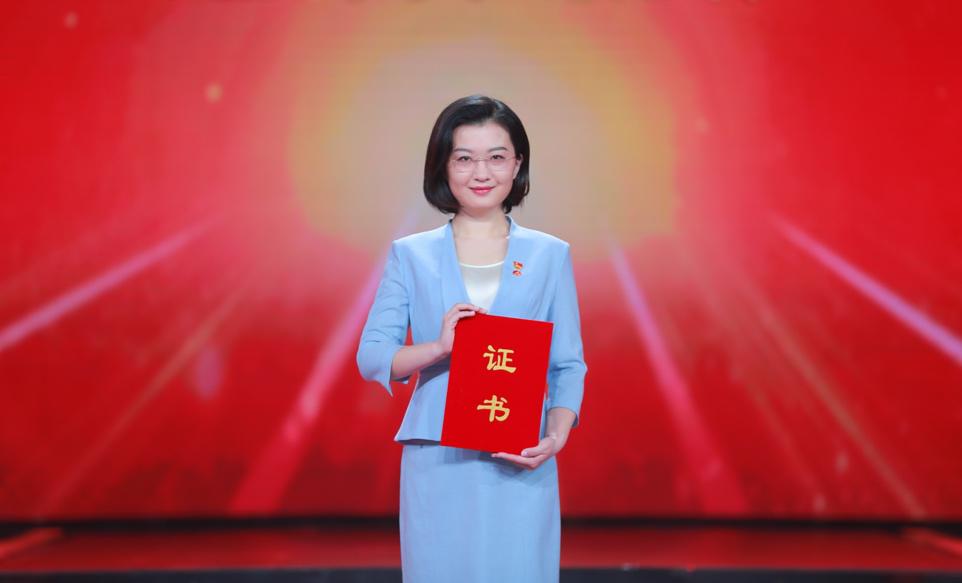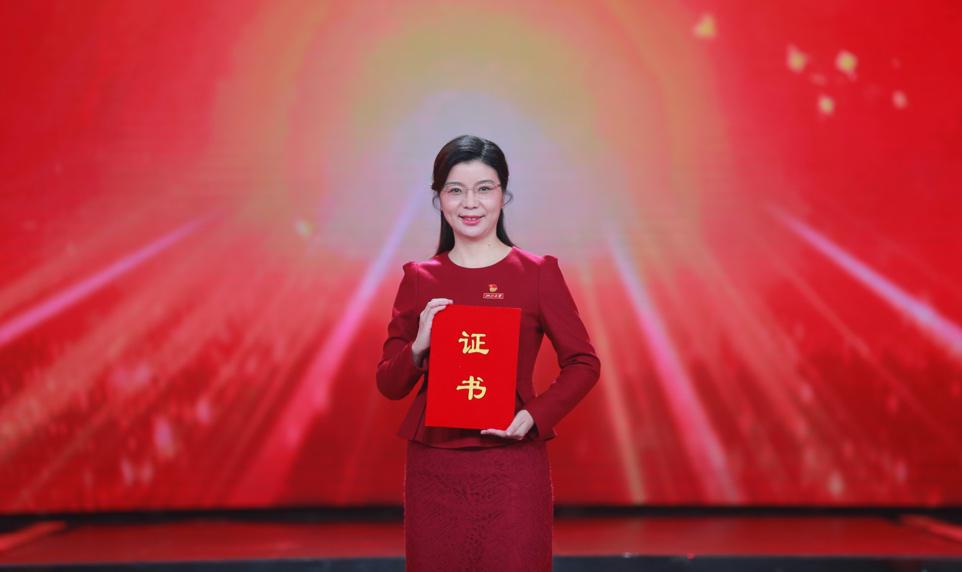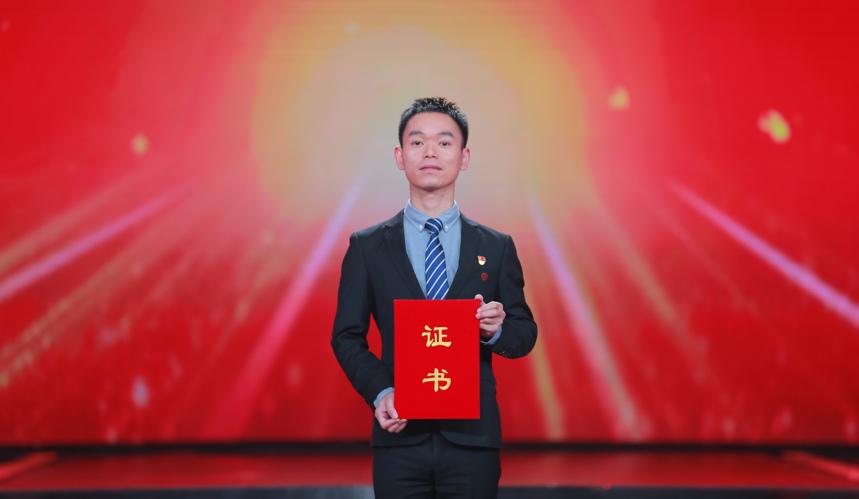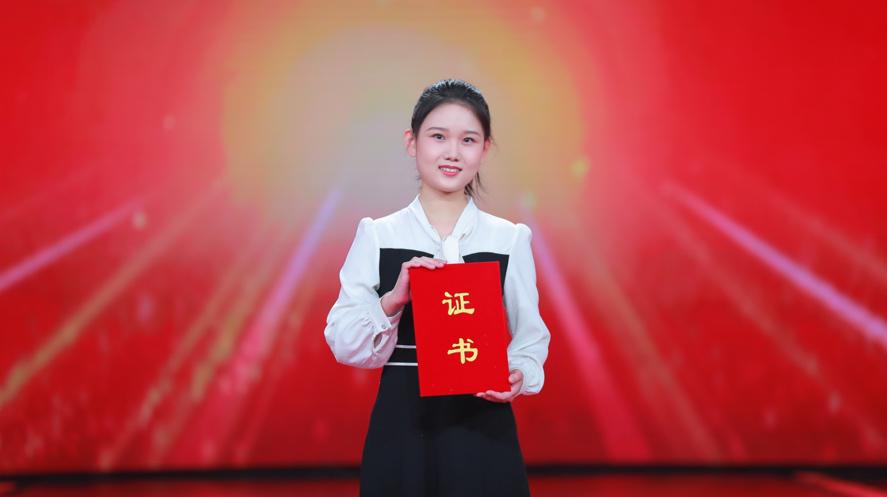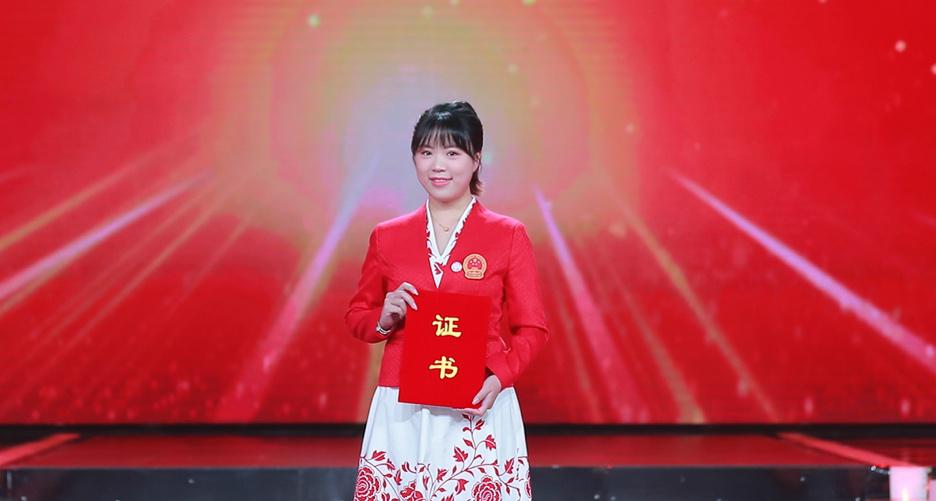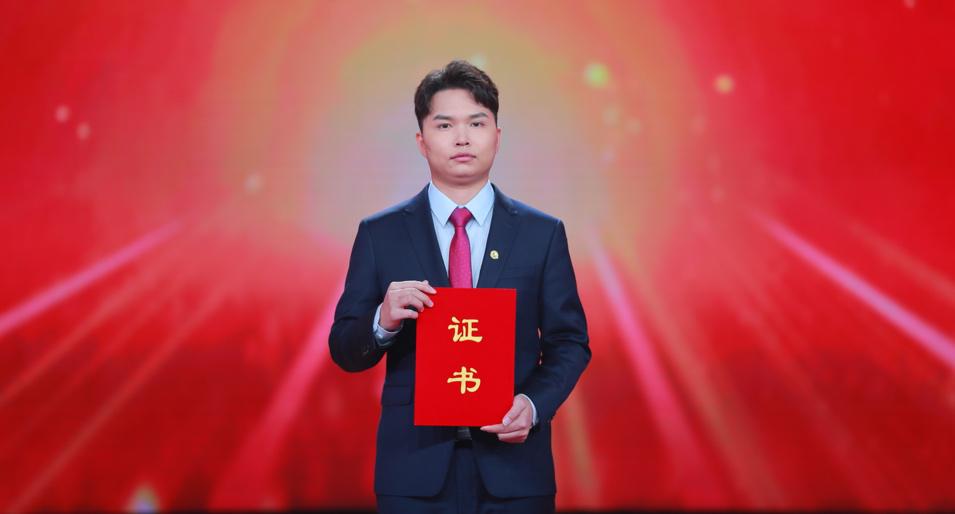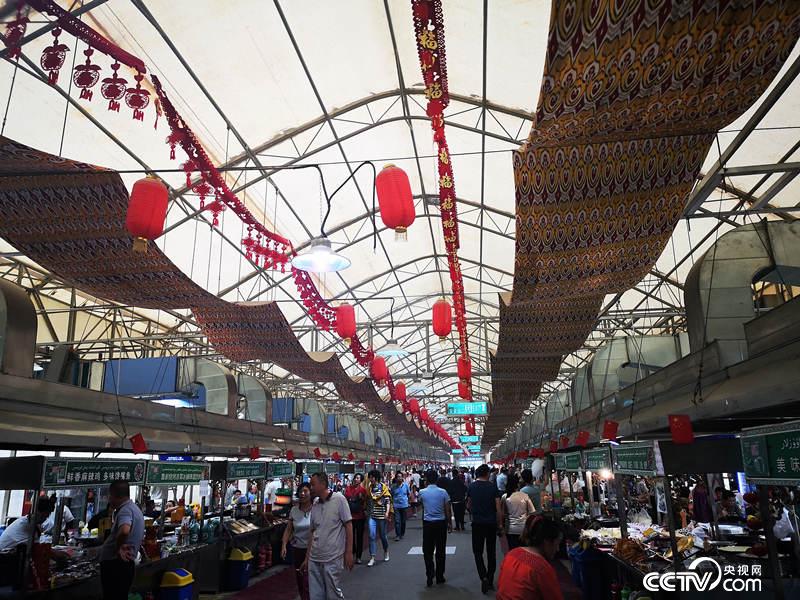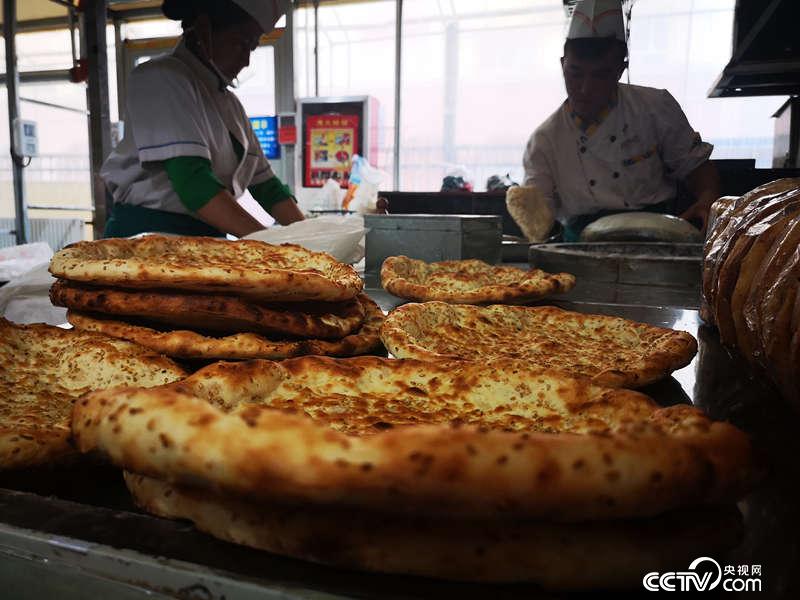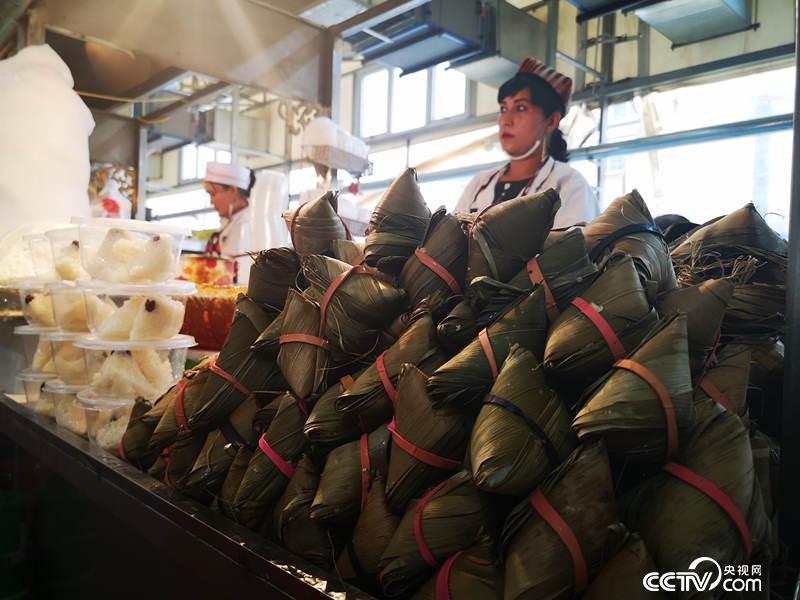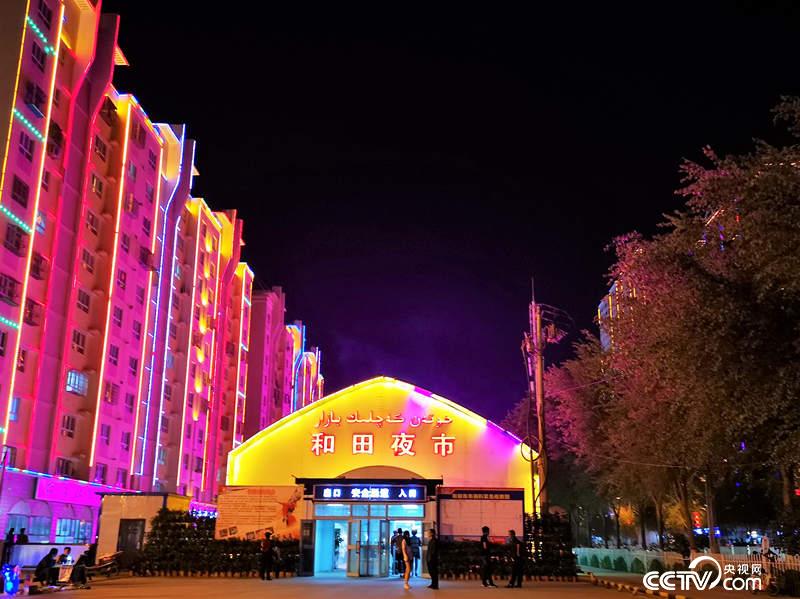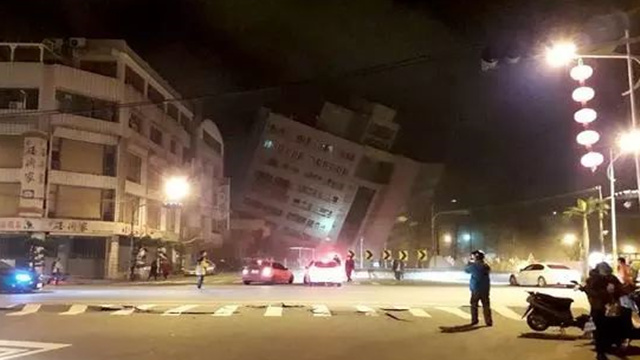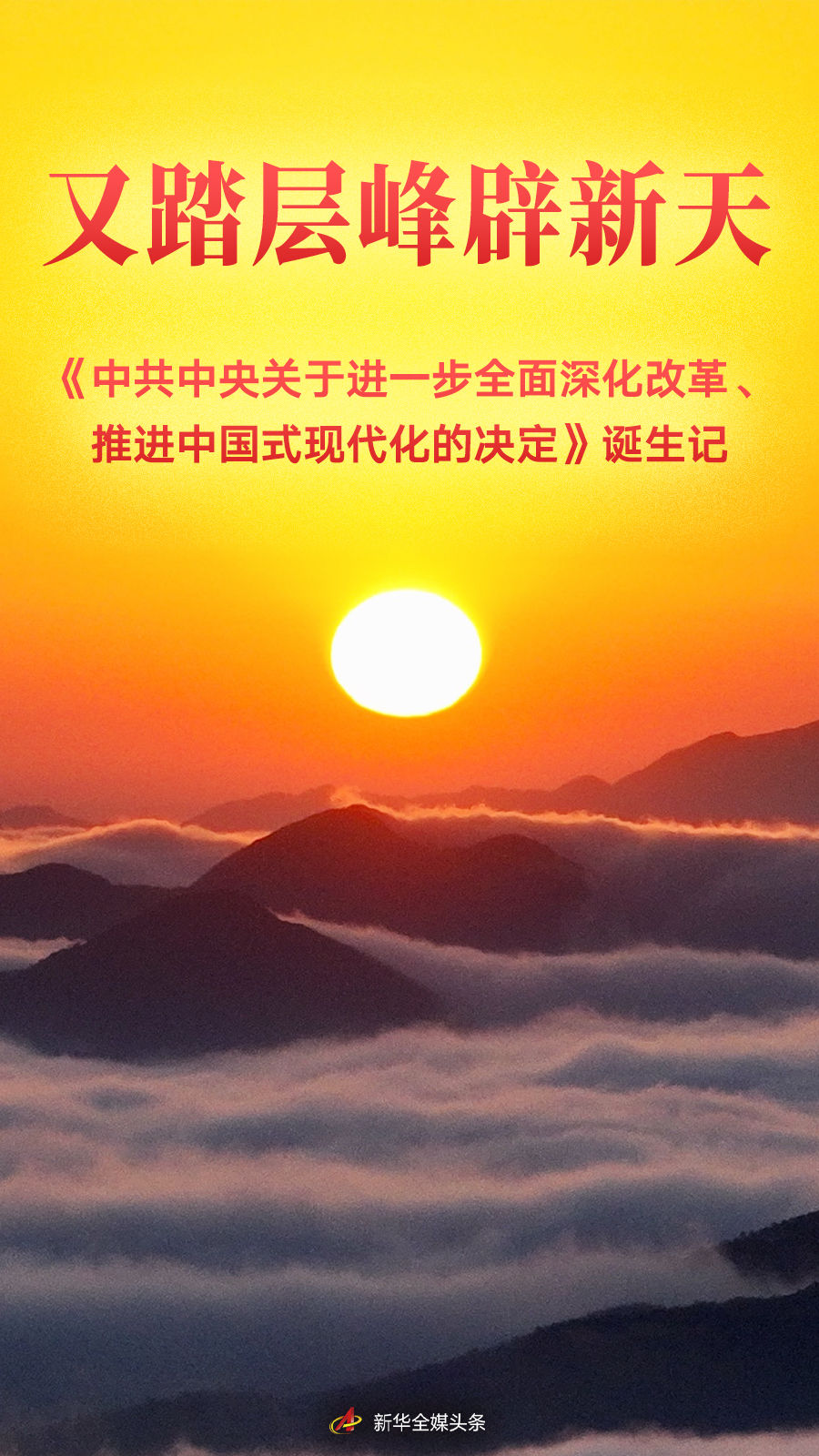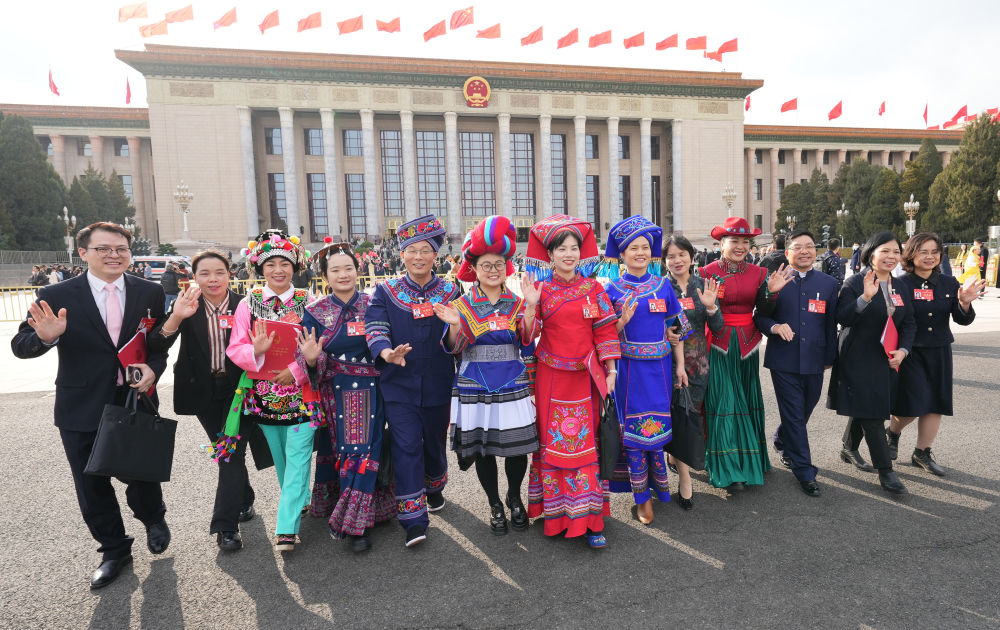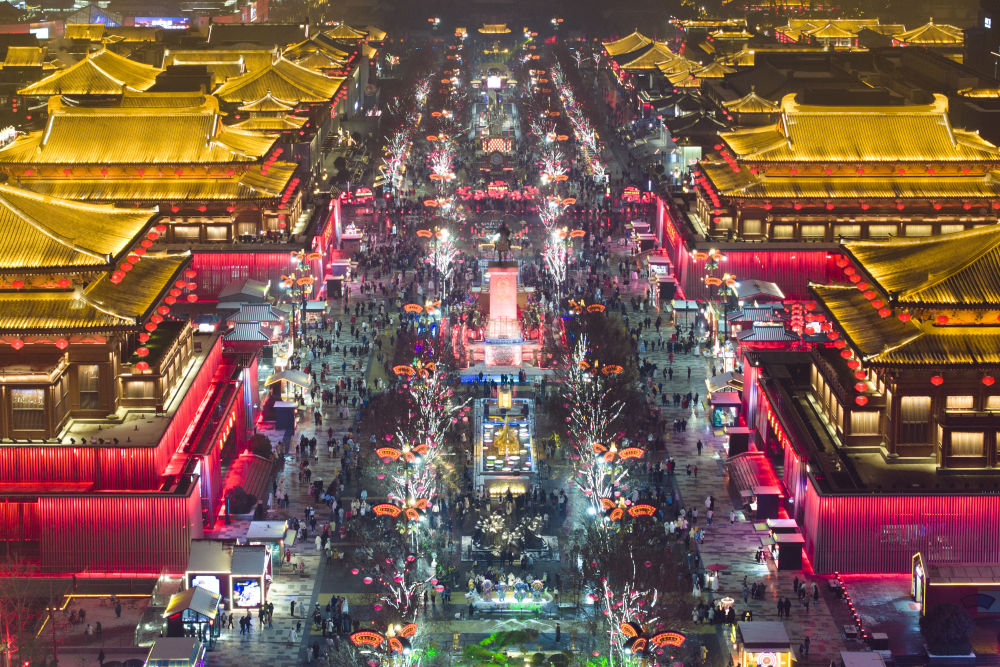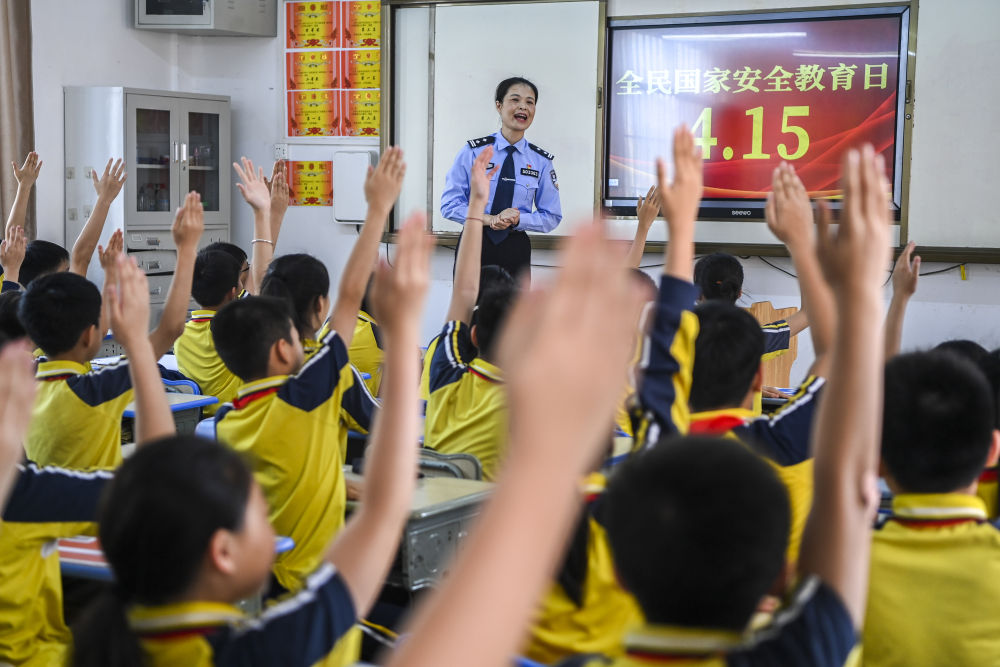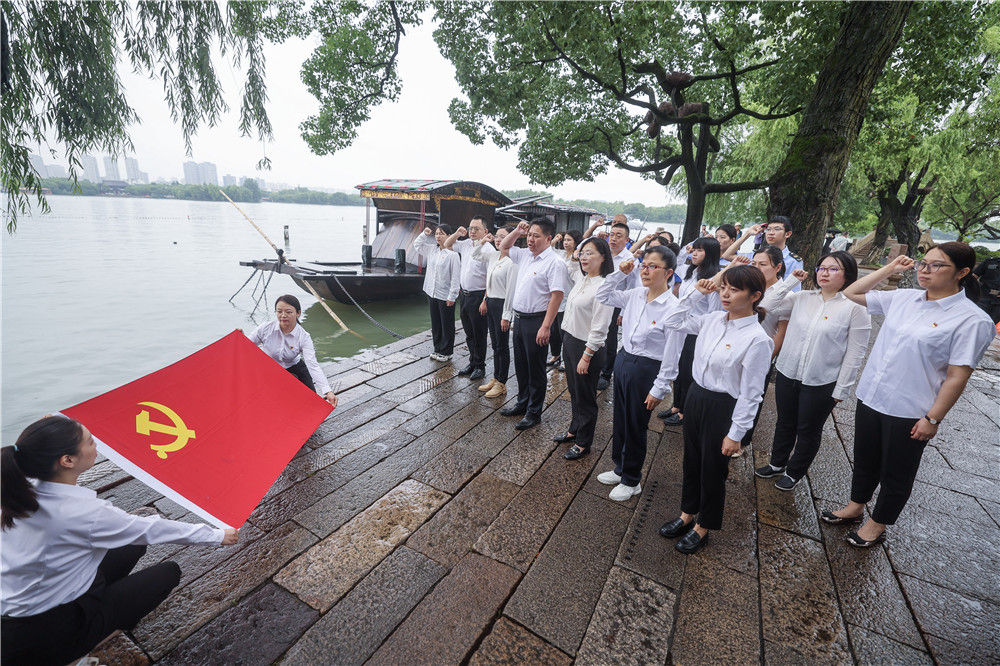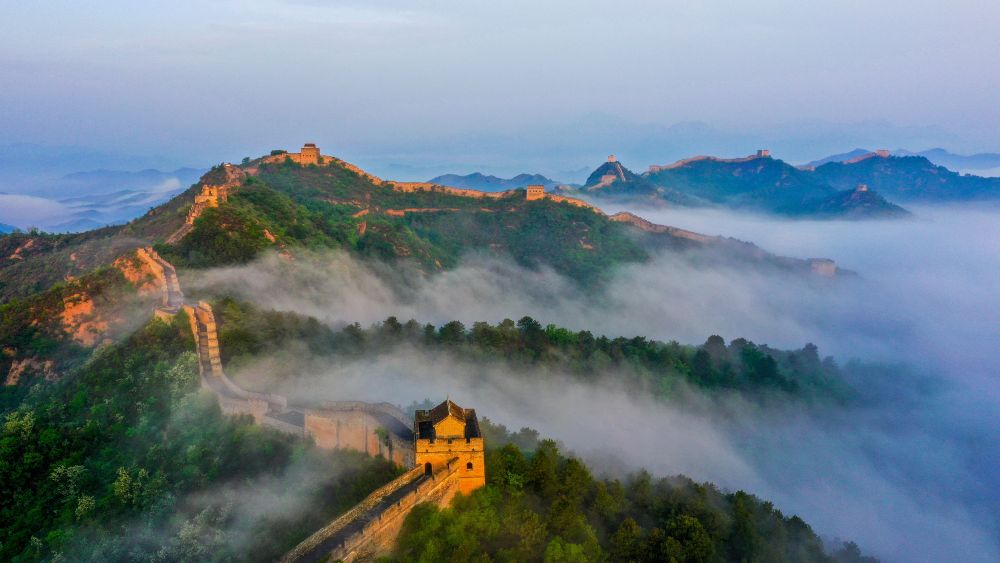The National Health and Wellness Committee held a special conference on introducing the development of "Internet+medical health" and the related situation of Internet medical services in hospitals.
On April 26th, 2018 (Thursday), the National Health and Wellness Committee held a special press conference in the third conference room on the second floor of Building A of China-Japan Friendship Hospital (No.2 Sakura Garden East Street, Chaoyang District) to introduce the development of "Internet+medical health" and the related situation of Internet medical services in hospitals.

Liu Zhefeng, Director of Information Department of Propaganda Department, presided over the press conference.China Network Zhang Ruomeng photo
[Moderator Liu Zhefeng]Hello, media friends. I’m Liu Zhefeng, director of the Information Department of the Propaganda Department, and I’ll preside over today’s press conference. Just now, more than 70 media friends visited the medical aviation medical rescue facilities and self-service registration machines in Chinese and Japanese hospitals. I believe that everyone has a further understanding of our medical institutions and our "Internet+medical health".
Today, I am very happy to invite Jiao Yahui, deputy director of the Medical Administration Hospital of the National Health and Wellness Committee, and Sun Yang, president of the China-Japan Friendship Hospital, as the main presenters of our conference today. The theme of our conference today is the development of "Internet+medical health" and the related situation of Internet medical services in hospitals. First of all, please ask Director Jiao to introduce the relevant situation to us.
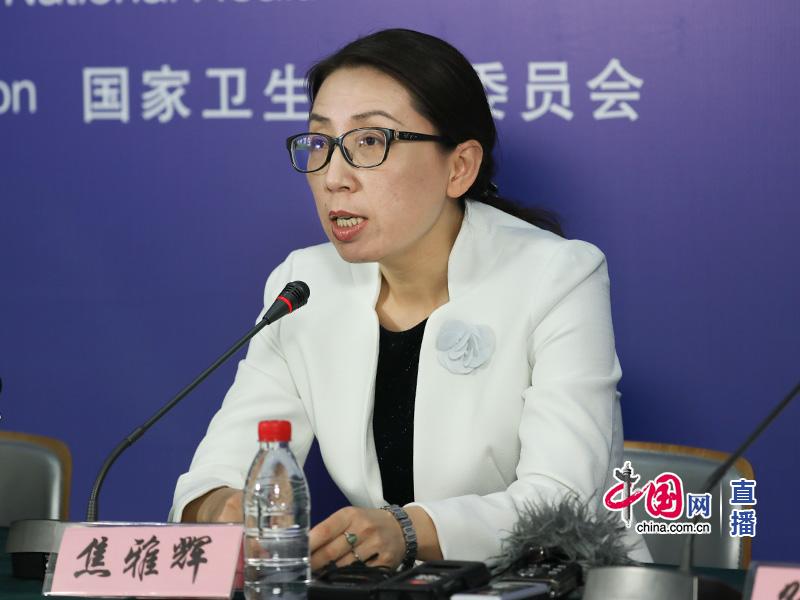
Jiao Yahui, Deputy Director of Medical Administration and Hospital Authority, introduced the situation.China Network Zhang Ruomeng photo
[Jiao Yahui, Deputy Director of Medical Administration and Hospital Authority]Good morning, friends from the news media. Thank you for your concern and support for health and wellness. According to the arrangement, I will introduce you to the promotion of "Internet+medical health".
The CPC Central Committee and the State Council attached great importance to the "Internet+medical health" work. The General Secretary of the Supreme Leader pointed out that it is necessary to promote "Internet+medical care", so that people can run less errands and run more data, and constantly improve the level of equalization, generalization and convenience of public services. Premier Li Keqiang stressed that it is necessary to speed up the construction of medical associations and develop "Internet plus medical care" so that people can enjoy quality medical services at their doorsteps. The Plan Outline of Healthy China 2030 and the State Council’s Guiding Opinions on Actively Promoting internet plus Action have all been deployed. In accordance with the deployment requirements, the medical and health industry has carried out various practices and explorations in the application of "internet plus" and big data, and all sectors of society have paid close attention to and actively participated in it. New models and new formats in the field of "Internet+medical health" have emerged constantly, providing great opportunities for promoting the transformation of industry functions, innovating service models and improving governance capabilities. At the same time, as a new thing, "internet plus Health Care" service will also encounter some new situations and problems, which need to be guided and standardized at the policy level in time to promote its healthy development.
In order to implement the decision-making arrangements of the CPC Central Committee and the State Council, the National Health and Wellness Committee, together with relevant departments, has studied and drafted the Opinions on Promoting the Development of Internet+Medical Health (hereinafter referred to as "Opinions on Promoting the Development of Internet+Medical Health") on the basis of extensively soliciting opinions and suggestions from relevant ministries, some provinces, research institutions and Internet medical enterprises, insisting on the combination of central top-level design and local innovation practice, the combination of "doing excellent stock" and "doing big increment", and the combination of encouraging innovation and preventing risks. On April 12th, Premier Li Keqiang presided over the the State Council executive meeting, which deliberated and passed the Opinions in principle, demanding that the development of "Internet+medical health" be accelerated, so that patients can run fewer errands and more people can share quality medical services.
To promote the development of "Internet+medical health", the general requirements are: thoroughly implement Socialism with Chinese characteristics Thought of the Supreme Leader in the new era and the spirit of the 19th National Congress of the Communist Party of China, promote the implementation of the strategy of healthy China, adhere to the people-oriented, convenient and beneficial to the people, adhere to inclusiveness, prudence, safety and order, adhere to innovation-driven and integrated development, improve the level of modern medical and health management, optimize resource allocation, innovate service models, improve service efficiency, reduce service costs, and meet the growing medical and health of the people.
The document mainly includes three aspects: First, improve the "Internet+medical health" service system. This part emphasizes the main areas of the integrated development of Internet and medical and health services, including the development of internet plus medical services, the innovation of internet plus public health services, the optimization of internet plus family doctor contract service, the improvement of internet plus drug supply guarantee service, the promotion of internet plus medical insurance settlement service, the strengthening of internet plus medical education and popular science services, and the promotion of internet plus artificial intelligence application service. The second is to improve the "Internet+medical health" support system. This part clarifies the relevant support means, and puts forward relevant measures from five aspects: accelerating the sharing of medical and health information, establishing and improving the standard system of "Internet+medical health", improving the level of hospital management and convenience service, improving the infrastructure support capacity of medical institutions, and formulating and perfecting relevant supporting policies in time. The third is to strengthen industry supervision and security. This part draws the bottom line of safe and orderly development, and makes clear provisions on strengthening medical quality supervision and ensuring data and information security respectively.
A series of policy measures put forward in the Opinions have clarified the clear attitude of supporting the development of "Internet+medical health", highlighted the policy orientation of encouraging innovation, inclusiveness and prudence, clarified the key areas and support system of integrated development, and also put forward the rigid requirements of safety supervision. The introduction of the policy will vigorously promote the deeper integration and broader development of internet plus’s innovation achievements and health field, and lay a solid foundation for all-round and full-cycle protection of people’s health and building a healthy China. "Internet+medical health" is a new thing, with many participants, a wide range of fields, and high privacy and security risks. It is also urgent for departments and localities to strengthen overall coordination and linkage interaction, and build a work system that is responsible, closely coordinated and efficient. Next, the National Health and Wellness Committee will work with relevant departments to organize and implement policies, take hospital application services as an important starting point, timely track and summarize local practices and strengthen guidance, speed up the work progress, achieve practical results as soon as possible, and earnestly safeguard people’s health and life safety.
The conference was held in the China-Japan Friendship Hospital, hoping that the affiliated hospitals would play a leading role in the demonstration of the "national team" and promote the effective implementation of the policy requirements of "Internet+medical health" in the whole industry.
The above briefing is brief, and the media friends are welcome to put forward their opinions and suggestions later. Thank you all.

Sun Yang, president of China-Japan Friendship Hospital, introduced the situation.China Network Zhang Ruomeng photo
[Sun Yang, Dean of China-Japan Friendship Hospital]Dear friends from the media, good morning. It is a great honor to attend today’s special press conference. First of all, on behalf of the China-Japan Friendship Hospital, I would like to welcome all the media friends and thank you for your support and concern for the hospital’s work.
The CPC Central Committee and the State Council attached great importance to the "Internet+medical health" work, and issued relevant policies for many times to promote the application of information and Internet technology in the medical health industry, give full play to the advantages of the Internet, promote the equalization of basic public services, break down information barriers, improve service efficiency, make people run less errands and more information, and make the Internet better benefit the people. The State Council’s innovative concept of "internet plus" has been implemented for quite some time. This time, the specific opinions on "Internet+medical health" were reviewed and approved, which further pointed out the direction of our efforts.
First of all, I would like to introduce to you some work done by China-Japan Friendship Hospital in Internet+medical health in recent years:
I. Telemedicine Work
As a hospital directly under the National Health and Wellness Committee, China-Japan Friendship Hospital actively implements the national policy of medical reform, strives to be a leader in medical reform, dares to take responsibility and innovate, actively explores a new development model of "Internet+medical health", and establishes a telemedicine collaboration network connecting grass-roots units and large hospitals earlier by using modern Internet information technology to connect medical institutions and medical personnel in different physical spaces.
Our hospital is the unit where the National Health and Wellness Committee Telemedicine Management Training Center and the National Telemedicine and Internet Medicine Center are located. As a national telemedicine center, we have continuously improved the construction of telemedicine business system for many years, and actively explored the telemedicine collaborative mechanism under the graded diagnosis and treatment mode. At present, the telemedicine network of our hospital has covered nearly 3000 medical institutions in all provinces, autonomous regions and municipalities directly under the central government (including Macao). Since 2015, the annual average number of remote consultations in our hospital has exceeded 5,000. Patients do not need to travel around for medical treatment, and they can get correct medical care in time in the local area, saving a lot of time and economic costs. According to incomplete estimates, the total cost of comprehensive medical treatment for grassroots patients is about 70 million yuan.
Second, the construction of medical associations
China has a vast territory, a large population, unbalanced economic and social development, and medical resources are facing problems such as insufficient total amount, fragmentation, imbalance and heterogeneity. Faced with this situation, our hospital combines Internet telemedicine with training, establishes regional and specialized medical associations, and promotes graded diagnosis and treatment mode to facilitate patients to see a doctor nearby.
Since 2013, our hospital has used telemedicine network to carry out remote consultation in the East Medical Association of Chaoyang District, Beijing to help the community improve its diagnostic ability, and completed a total of 4,957 remote consultations on radiation, electrocardiogram and 24-hour ECG monitoring; A regional appointment referral platform was established to guide patients to the community for the first time, and 2,697 cases of difficult diseases were transferred through the referral platform, forming a graded diagnosis and treatment model, which effectively promoted the coordinated development of regional medical care.
At the same time, our hospital gives full play to the advantages of disciplines such as breathing, pain, tumor of integrated traditional Chinese and western medicine and the role of technical radiation, and takes the lead in setting up a specialized medical association, and carries out professional cooperation and technical assistance such as standardized training of specialists, clinical research cooperation, prevention and control of major diseases, etc. in the medical association to solve major disease problems in the specialized field. We gradually applied Internet technology to the construction of specialized medical associations, and carried out rich services such as remote consultation, remote image diagnosis, remote teaching rounds, academic conference broadcast, online technical training, and large-scale scientific research collaboration, which effectively promoted the business development of specialized medical associations and promoted the discipline construction at the grassroots level. Since the establishment of the specialist medical association in 2016, more than 2,500 cases of difficult and critical cases, 985 cases of remote consultation, 17 sessions of remote training, a total of 960,000 person-times and 600 person-times of receiving further training have been completed. Last month, the Department of Dermatology and Sexology of our hospital led more than 500 hospitals across the country to jointly develop and launch China’s first "yellow skin tumor decision-making assistant AI system", taking the lead in applying artificial intelligence to Internet+medical care in this field.
Iii. Informatization for the convenience and benefit of the people
In terms of measures to facilitate the people and benefit the people, our hospital attaches great importance to promoting the integration and application of Internet information technology and medical services. By integrating the existing information of the hospital, we can develop patient-oriented information channels in multiple ways, such as APP and WeChat WeChat official account, and realize the functions of online appointment registration, payment, waiting for medical treatment, result inquiry and so on, so that patients can enjoy the front-end service of the hospital anytime and anywhere, effectively shortening the waiting time of patients and improving their medical experience. Internet technology is also playing an increasingly important role in the whole process of booking, satisfaction evaluation, hospital first aid system construction, mobile medical care and so on.
Among the patients admitted to the China-Japan Friendship Hospital, they came from all over the country, and more than half of the outpatients came from outside Beijing. Telemedicine and Internet medical care are the best way to solve the troubles of patients and their families rushing to our hospital. Patients can get the guidance of national experts in the local area through telemedicine and specialist medical system. There are also some foreign patients who come back to Beijing after being seen by experts. Telemedicine and Internet medical care can enable them to complete follow-up or follow-up visits with Beijing experts in their hometown, thus reducing all kinds of round-trip expenses and contributing to alleviating Beijing’s non-capital functions.
In the next step, according to the requirements of the Opinions, we will accelerate the implementation of Internet+medical health in our hospital from the following aspects, and strive to play a good role as a demonstration and model for hospitals directly under the Committee: First, further open the appointment service, expand the appointment means, and shorten the waiting time for medical treatment; The second is to fully open online payment, prepare for comprehensive coverage of medical insurance, new rural cooperative medical insurance and commercial insurance, and realize safe and convenient payment; The third is to further promote self-service, laying Internet bridges in doctor-patient interaction links such as registration, medical treatment, payment, inquiry, appointment, etc., so as to reduce the queue of patients at the window; Fourth, further use Internet channels to promote information disclosure and greatly expand the ways for patients to obtain information; Fifth, further promote telemedicine, integrate basic telecom operators’ 4G and 5G telecom facilities, establish an Internet telemedicine cooperation system with Chinese and Japanese hospitals as the core, and open up the whole process of telemedicine; Sixth, through the cooperation mode of "online and offline" and "up and down linkage", we will carry out two-way appointment referral and comprehensively promote graded diagnosis and treatment; Seventh, promote health management in an all-round way, and serve the patients with chronic diseases in the community, especially the online diagnosis and treatment services for patients with chronic diseases who return to visit; Eighth, relying on internet technology, we will build a smart hospital with more efficient work, more convenient service and more optimized experience. Looking forward to the future, Chinese and Japanese hospitals will continue to play an exemplary role in the application of "Internet+medical health", pay attention to people-oriented, patient-oriented, and constantly build and improve the "Internet+medical health" service platform guided by the people’s multi-level and diversified medical health needs.Strive to improve the management level of modern hospitals and improve service efficiency. In the accumulation of practical experience, we should explore the mode and development direction of "Internet+medical health" in line with the national conditions and hospital conditions, practice "Internet+medical health" with practical actions, and contribute to the realization of a healthy China.
[Moderator]Thank you, Dean Sun. Let’s enter the questioning session. According to the usual practice, everyone should inform the media where they are before asking questions. If there is no special need for appearance, you can sit and ask questions.
[Xinhua News Agency reporter]The question is addressed to President Sun. I would like to ask you, now that the Internet economy has stood on the cusp of innovation and development, what kind of expectations do you have for the standardized and systematic development of Internet medical health in terms of hospital practice? The second question is, how can the use of information technology better provide universal and convenient medical services for the people? Thank you.
[Sun Yang]Thank you very much for asking a very good question. It is true that there has been a lot of experience in developing medical and health services in the Internet field at the grassroots level. We have been expecting the country to have a top-level design and give us some good norms and standards. I believe that the opinion of "Internet+medical health" adopted by the State Council this time will provide us with a very good and normative guidance for providing medical services through the Internet in the next step, which will help to promote "Internet+medical health".
The second question is about facilitating the people and benefiting the people through "Internet+medical health". I think there will be more and more good news in this respect. Medical institutions can introduce Internet technology into the service of facilitating the people and benefiting the people, and can effectively solve many problems brought to patients through the development of information. For example, the queue for payment is long, the queue for registration is long, and the waiting time is long. We can all carry out mobile appointment, mobile graded diagnosis and treatment, and mobile payment through Internet technology, and effectively reduce the time for patients to queue, wait, and run. By using the Internet of 4G and future 5G technologies, we can also achieve more process optimization and management improvement in hospitals, including equipment sharing and management, patient safety management, etc., which will greatly facilitate patients’ medical treatment, and some patients who see a doctor at the grassroots level in the community can also easily contact doctors and experts in large hospitals directly through the Internet to help the grassroots solve more problems, which will have a very good role in promoting the entire medical and health service system.
[Workers Daily reporter]I would like to ask Dean Sun Yang. We all know that China-Japan Friendship Hospital has been carrying out telemedicine for many years. What is the difference between telemedicine and what we now call "Internet+medical health"? Thank you.
[Sun Yang]Thank you, this reporter. I think your question is very good. I think it is true that telemedicine is not exactly the same as the concept of "Internet+medical health" we are talking about today. The concept of telemedicine was first put forward in the 1990s. At that time, I also participated in this field. Looking back now, the technology at that time was still very simple. With the development of technology, we have also entered a brand-new Internet era. Director Lu Qingjun of our hospital’s remote center is also here, so please ask him to answer.

Lu Qingjun, director and associate researcher of telemedicine center, answered questions from reporters.China Network Zhang Ruomeng photo
[Lu Qingjun, Director and Associate Research Fellow of Telemedicine Center]The Internet has brought us many convenient conditions, and at the same time, it has also brought us a lot of expansibility. Let us extend the advanced medical technology to the grassroots, especially in remote areas. With the technical conditions, our telemedicine can easily benefit more people. Therefore, in fact, many Internet technologies have been used in the development of telemedicine, which has expanded many business models and brought us more convenient conditions. At the same time, the Internet also has a great advantage, that is, we can connect many new technologies such as big data and artificial intelligence through the Internet, which can enable us to achieve effective connections. For example, big data technology, cloud computing technology and artificial intelligence technology have brought us some new technologies and new opportunities, and at the same time, they have made our work efficiency more efficient and more convenient to use, so that it is possible to expand more to remote areas, including some emergencies. In the early stage, we also guaranteed many large-scale activities and national conferences by using internet medical care and remote technology, and gained a lot of experience and achievements for us. Therefore, Internet+medical care will give us more protection and more opportunities. At the same time, we should be confident and bold to develop our telemedicine along the route of standardized management and better promote "Internet+medical health". Thank you.
[Health News reporter]Ask Director Jiao, as we all know, alleviating the difficulty and annoyance of seeing a doctor is one of the most concerned issues for the people. What tangible benefits can "Internet+medical health" bring to the people? Can you give us a detailed introduction?
[Jiao Yahui]Thank you for your question. To sum up in one sentence, ordinary people can enjoy more convenience and benefits from "Internet+medical health".
Specifically, the first advantage is that patients outside big cities such as Beishangguang, especially those in central and western provinces, including rural areas, can enjoy high-quality medical resources in big cities such as Beishangguang without leaving home and have a crush on big doctor and big experts. This is what everyone calls "telemedicine".
The second benefit is to improve the family doctor contract service. Use the "internet plus" method to carry out the contract service of family doctors, and carry out daily health management and service for contracted patients. How can those patients with chronic diseases, especially some elderly people and disabled patients with mobility difficulties, enjoy convenient medical services? Through contracted services, family doctors will provide patients with adaptive health guidance. On the other hand, for some long-term and stable contracted patients with chronic diseases, if drugs need to be adjusted or there are no corresponding drugs at the grassroots level, family doctors can prescribe some drugs for him online and deliver the drugs directly to their homes through third-party distribution, so that patients can enjoy real convenience.
The third benefit is to use the technology of "internet plus" to make medical treatment more convenient. For example, going to the China-Japan Friendship Hospital, as President Sun has just introduced, there are many information means to facilitate patients to register for medical treatment. Now, many hospitals have developed their own mobile APP, and have their own hospital information platform to provide patients with convenient services such as registration and appointment. For another example, some provinces such as Beijing and Zhejiang have developed a unified appointment registration platform in the province, and patients can use mobile phones to solve the registration problem on the mobile side. In addition, we also promote the appointment of medical treatment by time, so that the appointment time can be accurate within one hour or even half an hour. While facilitating patients to seek medical treatment, the hospital can readjust the peak of medical treatment. We also offer services such as mobile payment, inter-clinic settlement, online inspection and test results inquiry, medical guidance service and health information push, which bring tangible convenience to patients.
[China Business News reporter]You just mentioned that "internet plus" medical care has brought a lot of benefits and convenience to the people. Everyone is very concerned about what measures "Internet+medical health" will take to supervise medical quality.
[Jiao Yahui]The question you asked is very important.
As I mentioned earlier, we have two important safeguard policies in the document, one is medical quality and safety, and the other is data and information safety. These two "safety" are also the most concerned issues of government departments and all walks of life. We are highly concerned about medical quality and safety. On the one hand, we are allowed to rely on medical institutions to develop Internet hospitals. We must ensure the authenticity and reliability of information and the identity of doctors can be effectively verified. On the other hand, we allow internet companies to enter the medical and health field, but at the same time, we must bear the corresponding responsibilities, requiring them to land in the hospital to ensure that they can be "visible and tangible". Therefore, we stipulate that relying on physical medical institutions, we must also conduct online and offline unified supervision. With regard to the qualifications of doctors, a unified electronic registration information base for doctors has been established in China. In this database, everyone can find the information of all medical institutions, doctors and nurses in the country, and anyone who logs in this system can find it.
The second way is to digitally authenticate the identity of doctors to ensure the quality. In the next step, we also need to carry out the identity authentication of doctors’ online diagnosis and treatment figures, that is, to ensure that the whole process of online diagnosis and treatment should be traced and traceable, and the doctor’s diagnosis and treatment behavior can be supervised throughout the process, and the whole country should be networked.
The third is to clarify the main responsibility, especially the main responsibility that Internet companies should bear. Once an adverse medical event or damage event occurs, in addition to the main medical institutions, we should also increase the main responsibility of Internet hospitals organized by Internet companies. By increasing the main responsibility, Internet companies can take the initiative to fulfill their responsibilities and be responsible for the services and medical treatment provided.
In some places, some Internet monitoring platforms have been established, which can monitor the medical behaviors of all Internet hospitals in the region, including medical institutions, using the Internet in real time.
I remember that when the State Council held a briefing, Director Yu of the Planning and Information Department had a very vivid metaphor, that is, we should not only step on the accelerator, but also be prepared to step on the brakes. Therefore, on the one hand, we should encourage development, on the other hand, we should strengthen the supervision of medical quality, and adopt the basic principles of tolerance and prudence in a responsible attitude towards people’s health and lives.
Thank you.
[China Family News reporter]I would like to ask the focal bureau, which just mentioned security, how to ensure information security, including the safety of patients’ medical records? Second, now that medical institutions can develop Internet hospitals, how to understand the concept of Internet hospitals and how to define it? Third, doctors in big hospitals, especially attending doctors, are very busy now. They are already busy offline. How can we ensure that they provide medical services on the Internet? I’d like to ask you two.
[Jiao Yahui]Thank you. I’ll answer your two and a half questions first, and leave the second half to Dean Sun Yang.
First of all, about the security of data information, such as electronic medical records, everyone is worried about the privacy leakage of patients. In fact, whether online or offline, for a long time, the health administrative department and our hospital have paid close attention to the privacy protection of patients, including the privacy protection of patients during the treatment and the safety of medical record information generated after the treatment. All along, there are very clear and strict regulations on the storage and use of medical record information, etc. These regulations are relatively clear, and the corresponding documents can be found, so I won’t waste any time to talk about them. Next, we are also studying to ensure the security of electronic information data. According to the national information security law, different information systems have corresponding levels of confidentiality requirements, which we call "equal protection", and health information is also required to be managed at a very high level. In the next step, we should also require "equal protection" for these information systems to strengthen security protection technically.
On the other hand, it involves the question of "confirming the right" of electronic information, that is to say, who "belongs" to these electronic data information, and only after confirming the right can it be clear who can use the data? How to use it? We are also studying with many legal experts, including experts in information and hospital management, to confirm the data information of electronic medical records. For example, there is a bill in the United States, which first clarifies the protection of all rights and interests of data information. Our country should also confirm the right in the form of laws and regulations, and increase the protection of information security.
The second question, what you asked is how to understand the Internet hospital. As I mentioned just now, the Internet hospital is a new thing. From any country, the concept of a hospital or a medical institution in the "traditional view" is like a Sino-Japanese friendship hospital with buildings, wards, operating rooms, medical nursing professionals, logistics and administrative personnel, and a series of equipment. "Internet Hospital" is a relatively new thing. We didn’t have such a form in the past, and we also lacked practical experience in this aspect of supervision. Now, the actual Internet hospitals have broken through the barriers of time and space. In the Internet hospitals, most of them are doctors, and there are no more people. Some Internet hospitals have hired some pharmacists to review prescriptions, so this "Internet hospital" is no longer the concept of a hospital in the traditional sense.
After the the State Council document is issued, we should also study and issue supporting documents on the management methods of Internet hospitals, define "Internet hospitals", and clarify the registration process of Internet hospitals. For example, our current medical institutions and hospitals are required to issue licenses for medical institutions. What level of health administrative departments should issue licenses for Internet hospitals, how to check and accept them, and how to supervise them? We are working with experts in law, hospital management and information to study these policies and publish them as soon as possible. I hope this document can answer your questions.
The third question, the doctor is already very busy offline. Do you have time to provide online services? I don’t think we should separate "Internet+medical health". In fact, internet plus has a wide range of applications. The doctor in a big hospital is really busy. He sees patients in the consulting room, but in fact he is already applying these internet technologies, such as using remote technology to prescribe some prescriptions for patients. We now have a mode called "primary examination, superior diagnosis". For example, in some places in the central and western regions, primary institutions directly connect the remote system to the imaging center of the local 3A hospital, and the ECG, B-ultrasound and image examination done by primary institutions can be uploaded to the remote imaging diagnosis center or remote ECG center of 3A hospital in real time. Doctors in these big hospitals have actually provided services to primary institutions by means of remote or Internet during his working hours. Therefore, I think we should not divide "online" and "offline" into eight hours or less, which is artificially and mechanically separated. Our doctors can not only use their spare time to see patients on the Internet, as is traditionally understood. In addition to using fragmented time to provide services, he is also using internet technology to serve patients during his time in the hospital. There are also doctors in the community, who can not only sit in the consulting room to see patients, but also use Internet technology to provide remote health guidance and even adjust medication for contracted patients at home, so as to carry out health management and monitoring. So, I don’t think this is an either-or question.We should look at the application of Internet technology in doctors’ work comprehensively, which plays an important role all the time.
[Sun Yang]Director Jiao has made it very clear just now. Personally, I think that the development of Internet technology will definitely make it more convenient for patients to seek medical treatment, and the burden on doctors will become lighter and lighter. This must be a general trend. I believe that with the continuous upgrading of Internet technology, it will play a more and more important role in promoting the process optimization of our future medical services. In the past, our traditional thinking was to go to work during the day and surf the Internet after work. This concept may not be the same in the future. Some of our medical procedures will undergo major changes. For example, through the internet and remote, patients may not need to go to big hospitals, and many problems will be solved at the grassroots level. Through our internet technology, it can also help improve the hospital’s diagnosis and treatment process and improve our work efficiency. Take our hospital as an example. Now we have three campuses, and doctors often need to run between them, which consumes a lot of time and cost. Now we can solve many problems through the Internet and remote technology. In the future, even between departments and between different floors, doctors often don’t have to run back and forth. Including some intelligent aided diagnosis, will improve work efficiency and reduce labor costs. For example, sometimes our radiological images are so large that doctors need to spend a long time looking at them. In the future, we can use artificial intelligence to help with screening, focusing on a few key images, and doctors can make decisions, which greatly improves the efficiency. Therefore, I believe that the development of the Internet will definitely reduce the burden on medical staff and facilitate patients to seek medical treatment.
[China Population Daily reporter]I would like to remind Secretary Jiao that we have noticed that many arrangements have been put forward in the opinions on promoting the development of "Internet+medical health". What I want to know is what new changes will be made to the service of "Internet+medical health" by medical institutions in the future? Thank you.
[Jiao Yahui]In fact, the change of service concept of medical institutions will not be changed until the document is issued. In fact, many hospitals across the country have already made great changes by using Internet technology. I think the coverage of this work is still relatively wide in the country, especially in 2015, when we launched the action plan to improve medical services nationwide. 2015-2017 is the first three-year cycle, and this year will be the second three-year cycle from 2020. We have incorporated some good experiences and practices from all over the country into the action plan to improve medical services, which has become a must for all hospitals in quick march, and one of them includes using Internet technology to improve our medical services.
First of all, to optimize the process of medical services, the most obvious change is the appointment of medical treatment, which I mentioned just now. You don’t have to go to the hospital early in the morning to queue up and register, and you may not be able to hang up the number. There is a photo that you may have seen. In the outpatient hall of a top three hospital, there are people lying and sitting waiting for registration in the early hours of the morning. There is also a TV camera that impressed me very much. After the hospital opened in the morning, people flooded into the outpatient hall of the hospital to register, comparable to Spring Festival travel rush. Scenes like this may occur at certain stages. For example, after the Spring Festival this year, there used to be some photos on the Internet, but most of the time, we have not seen such a scene in the hospital. Therefore, the real benefit of making appointments by time is to effectively divert patients.
In addition, inter-clinic payment and mobile payment, including "bedside settlement" of discharge, are some conveniences brought by internet technology and changes in hospital service processes. There is another job, which I think will improve the patient’s personal experience. We require centralized appointment examination, which may have been felt by many patients in the past. When coming to the hospital, different departments may need to do different examinations, and each department may make a list for him. It is very inconvenient for patients in other places to run many times, especially for patients in other places. Now we require that everyone who can concentrate on making an appointment and give patients an appointment at the same time, such as coming in the morning on the same day. All the blood is drawn on an empty stomach, and all the necessary tests are done. After returning, patients can not come to the hospital to get the film and results, and they can check their own test results through their mobile phones. These are some changes we have made in medical services, which are very convenient for patients. At present, some hospitals use internet technology to improve logistics services. Although it is not the core service of medical care, patients feel very good. To give a simple example, when patients come to the hospital, they feel that there is a serious traffic jam at the door, and they can’t get in. Especially when they drive to see a doctor, the biggest headache is that they can’t find a parking place. Now some hospitals cooperate with Internet companies to integrate the surrounding parking lots and parking spaces into an inquiry software and map. When patients come to the hospital, they can inquire about the parking places around them, which is convenient for finding parking spaces. These are all real solutions to the various needs of patients.It should be said that it brings great convenience to patients.
Another convenience, as I mentioned earlier, is telemedicine. When we released the document, please note that in the field of "Internet+medical health", the first measure proposed is to allow the development of Internet hospitals relying on medical institutions, and the second measure is to use Internet information technology to promote the sinking of high-quality medical resources within medical associations. We are promoting the construction of medical associations all over the country. Dean Sun Yang also mentioned that the best, most effective and fastest-growing model in the construction of medical associations is specialist alliance. The most effective means for the development of specialist alliance is telemedicine, which can radiate our high-quality resources, on the one hand, help promote the improvement of the basic medical service capacity, and on the other hand, enable the people in these remote and poverty-stricken areas to enjoy the medical services of these high-quality resources and experts.
The third change in medical services, which I mentioned earlier, is "internet plus Public Health Service", including "internet plus Contract Service". We allow medical institutions to provide online follow-up services for some patients with common diseases and chronic diseases by using Internet technology, which is not the first visit. Here, I would like to emphasize that it is allowed to provide follow-up services for some patients with common diseases and chronic diseases, and after mastering the key medical record information of patients, they can make prescriptions online, and after making prescriptions online, they can distribute some drugs to patients’ homes through third-party enterprises, which is really very convenient for some patients with long-term chronic diseases, especially some elderly patients with chronic diseases. These are some changes brought by "internet plus" in the field of medical services. Some changes have already taken place, and some changes, such as the application of AI and artificial intelligence, are happening or will happen soon, which will affect everyone’s life. Thank you.
[Science and Technology Daily reporter]I’d like to ask Dean Sun. You just mentioned that when we are building medical associations, we also help grassroots hospitals to build disciplines. I’d like to ask if this discipline construction is a loose relationship. Or give them some training? What changes have they made after we have helped the construction of grassroots disciplines, and what are their feelings in the process of remote consultation or cooperative diagnosis and treatment? Please introduce it.
[Sun Yang]Thank you, reporter, for asking a very good question. Through the internet, it can really promote the construction of medical associations and promote graded diagnosis and treatment. I think this effect is very obvious. In the past two years, we have successively established medical associations in various specialties, including respiratory department, pain department, tumor with integrated traditional Chinese and western medicine, anorectal, hair, upper cervical vertebra and other specialized medical associations. At present, more than 2,000 hospitals have joined our specialized medical associations covering more than 20 provinces. We have mainly carried out two aspects in the construction of medical association: first, we have carried out two-way referral, and transferred some difficult and critical patients to our hospital in time. After the patients enter the rehabilitation period, they will be transferred back to the grassroots hospitals in time to solve the problem of patients seeing a doctor. The second is to carry out training in the medical association. With the help of the network provided by operators and some professional media, a brand of specialized training has been formed nationwide. At present, nearly one million grass-roots doctors have obtained very good professional knowledge through online training, and through this training, combined with our remote consultation, they have helped them solve some difficult diseases in the local area.
Today, in our meeting room, there is a doctor from our medical association, Dr. Jiang Mingyan from Xiangtan, Hunan Province. He has also participated in the training and referral of our respiratory medical association for many times. We asked him to talk about some personal experiences.

Jiang Mingyan of Xiangtan Central Hospital answered a reporter’s question.China Network Zhang Ruomeng photo
[Jiang Mingyan, Xiangtan Central Hospital]Thank you, Dean Sun, and thank you media friends. I’m Dr. Jiang from Xiangtan Central Hospital in Hunan. It has been almost a year since we joined the respiratory medical association of China-Japan Friendship Hospital. Recently, I am participating in the visiting project of respiratory and critical care discipline construction organized by China-Japan Hospital, so I am fortunate to attend this meeting.
Here I talk about some feelings from the grassroots. I feel that I have gained a lot since I joined the medical association. Our hospital is located in the central region. Although we are also a tertiary hospital, there is still a big gap in terms of the development level of respiratory discipline compared with the national-level hospitals such as China-Japan Friendship Hospital. By participating in many on-line trainings, including some on-site rounds jointly organized by Academician Zhong Nanshan and Academician Wang Chen, organizing general practitioners to learn and summarize in real time is of great help to improve our ability and standardize the diagnosis and treatment of patients.
Medical associations often discuss difficult cases on the Internet, which is also a good form. There are many difficult cases that we can’t see at the grassroots level. Through this platform, we can grasp some very advanced research progress and diagnosis and treatment technologies.
We also invited experts from Chinese and Japanese hospitals to help us diagnose and treat some difficult cases through telemedicine. Let me give you an example. Last year, we met a critically ill patient with alveolar hemorrhage in his forties. At that time, our treatment effect was not good. We asked Mr. Zhan Qingyuan many times through the Internet. Mr. Zhan provided us with a lot of help online, but it hasn’t been solved yet. He personally went to Hunan to give us on-site guidance, helped us make some small adjustments in details, and solved the problem. It is impossible for patients like this to have a long-distance transshipment. There is no such condition at all. After we connected through the specialized medical association, these problems were solved. I think online and offline diagnosis and treatment should be combined, including the training of some personnel. Many of our doctors and nurses will receive training online and offline, and we will have training plans in the future. I would also like to thank the Chinese and Japanese hospitals and Dean Sun for their support.
In addition, we also spread the knowledge learned from the specialized medical association to the primary hospitals in our region. Our hospital, including our community, also made great achievements in the action of improving medical services just mentioned by Jiao Ju. We are also building remote imaging centers and electrocardiogram centers, and constantly playing the role of high-quality medical resources in the construction of specialties.
There is another one that we deeply feel. Many patients with end-stage lung disease, including chronic obstructive pulmonary disease and fibrosis patients, need lung transplantation. We can’t solve these problems. What should we do? Chinese and Japanese hospitals have the top lung transplant department in China. We used to have such patients come here for evaluation, but it is difficult to wait for a lung, and patients have to travel back and forth. We contacted the teachers in the Chinese and Japanese hospitals remotely, and first evaluated the patients in our local area. After the evaluation, if there was a suitable lung donor, the patients would have come over at that time, saving a lot of travel.
I feel that in grassroots communities, especially in vast rural areas, patients have greater demand for quality medical resources. We will work together with Chinese and Japanese hospitals to do a better job.
[China Women’s Daily reporter]Artificial intelligence is now widely used in medical treatment, not only in surgery, diagnosis, but also in treatment. I would like to ask the Jiao Bureau to talk about whether there is any research and development in this area in our country at present, and whether there are any supporting policies or plans in our country. Thank you.
[Jiao Yahui]Thank you. I think your question is also in line with the direction of our national innovation-driven development strategy. The application of artificial intelligence involves the joint efforts of users and medical enterprises in Industry-University-Research, especially the application of artificial intelligence in the medical and health field. As the provider of medical and health services, we know the needs of patients best, so we put forward some ideas and needs of artificial intelligence according to the needs of patients, such as the artificial auxiliary diagnosis system I mentioned earlier, including Leonardo da Vinci surgical robot, surgical navigation, etc. These are all AI technologies used from the supply side in a broad sense. From the demand side, AI has a wider range of applications, such as some wearable devices used to monitor blood pressure and blood sugar. You are a reporter from China Women’s Daily. Now there are some women’s and children’s hospitals and maternity hospitals. For some pregnant women who have a prenatal check-up, they have remote fetal heart monitoring AI equipment, which reduces the travel burden for pregnant women to have a prenatal check-up. From this perspective, our medical and health industry is more about putting forward some ideas, working with universities, research institutions and scientific research institutions to develop more targeted and more market-oriented artificial intelligence products, such as the University of Science and Technology of China in Hefei, Anhui Province, including Tianjin and Hunan. Many universities have R&D teams, and some innovative companies and enterprises have jointly developed many AI products.
You mentioned whether the country has an overall plan and arrangement in this area. I don’t know the plan very clearly, but I believe that the science and technology department should have some important plan support and arrangements, because I have heard that many hospitals and experts have mentioned that they have participated in some key research plans or taken charge of some scientific research projects. Some of these plans and projects are major national scientific research projects, some are local projects, and some social funds and funds have also funded or provided research and development in this area. I think that in terms of AI scientific research, not only the government is pushing forward, but also all forces from the country to the local, from the government to the society are mobilizing. Everyone is doing this work, and as far as I know, China is still ahead in the world in this respect, so we are full of hope and expectation for this prospect.
Thank you.
[Moderator]Thank you, media friends! That’s the end of our special press conference today.
